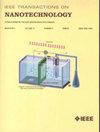Gate Tunable Retention in Optoelectronic Synapses Using Oxide Semiconductor Thin Film Transistors
IF 2.1
4区 工程技术
Q3 ENGINEERING, ELECTRICAL & ELECTRONIC
引用次数: 0
Abstract
In this work we propose a biasing scheme to modulate the retention behavior of oxide semiconductor based optoelectronic synapses. The method has been demonstrated using a zinc oxide thin film transistor, which exhibits persistent photoconductivity to UV light. The application of a negative gate bias prevents the recombination of photo-generated carriers, leading to a negligible decay in the post synaptic current and consequently, the retention time could extend beyond利用氧化半导体薄膜晶体管的光电突触门可调谐保持
在这项工作中,我们提出了一种偏置方案来调节氧化物半导体光电突触的保留行为。该方法已被证明使用氧化锌薄膜晶体管,其表现出持久的光导紫外线。负栅偏压的应用阻止了光产生载流子的重组,导致突触后电流的衰减可以忽略不计,因此,保持时间可以延长到10^{5}$s以上。短期记忆、长期记忆、持续时间依赖性可塑性和成对脉冲促进等突触功能均有改善。与$V_{gs}$ = +5 V相比,$V_{gs}$ = - 5 V时突触后电流衰减率提高了5倍。此外,我们还评估了这些改进的保留特性对人工神经网络性能的影响,该网络设计用于MNIST手写数字的模式识别。在$V_{gs}$ = +5 V时,准确度随时间急剧下降,从96%下降到近40%,而在$V_{gs}$ = - 5 V时,准确度仅下降到94%。
本文章由计算机程序翻译,如有差异,请以英文原文为准。
求助全文
约1分钟内获得全文
求助全文
来源期刊

IEEE Transactions on Nanotechnology
工程技术-材料科学:综合
CiteScore
4.80
自引率
8.30%
发文量
74
审稿时长
8.3 months
期刊介绍:
The IEEE Transactions on Nanotechnology is devoted to the publication of manuscripts of archival value in the general area of nanotechnology, which is rapidly emerging as one of the fastest growing and most promising new technological developments for the next generation and beyond.
 求助内容:
求助内容: 应助结果提醒方式:
应助结果提醒方式:


